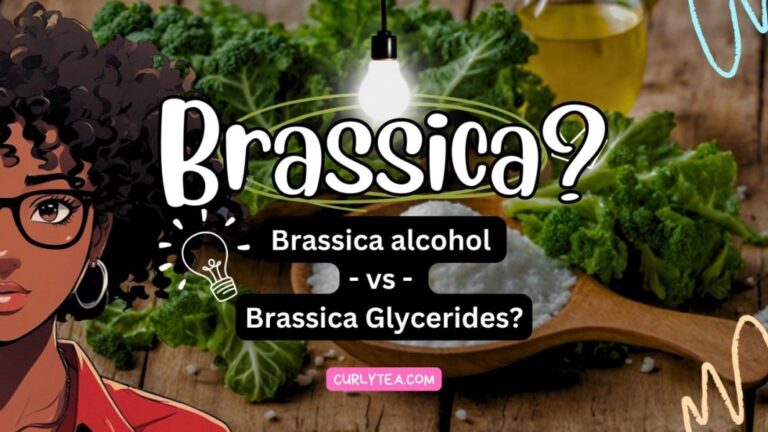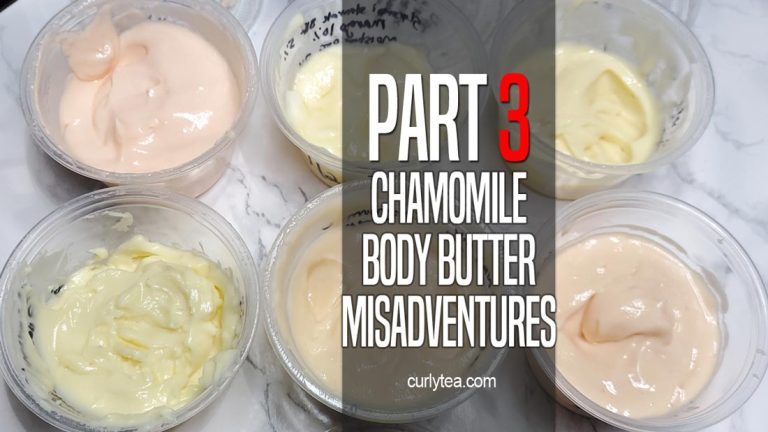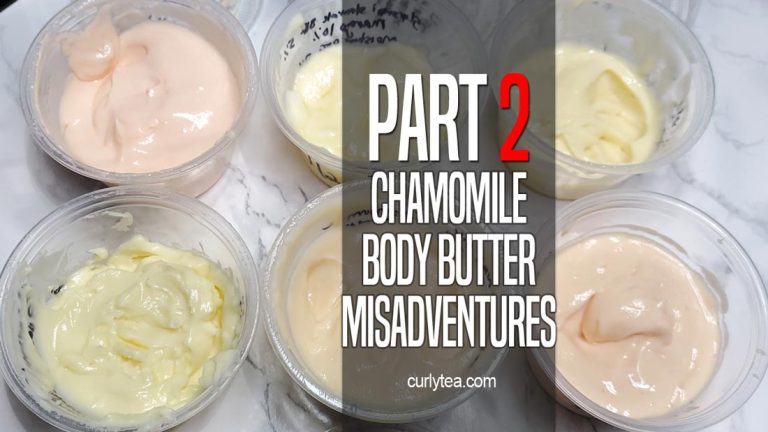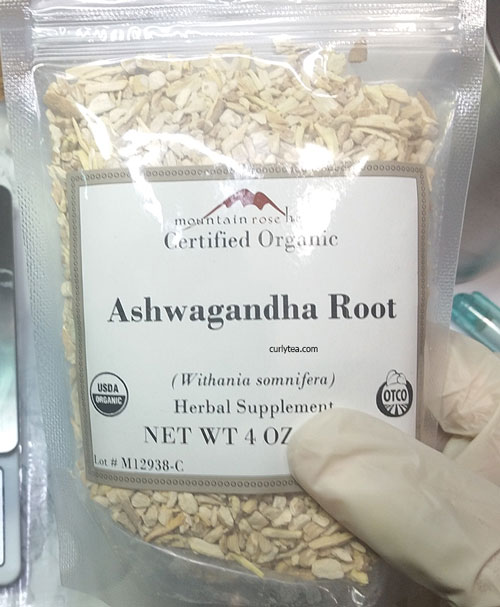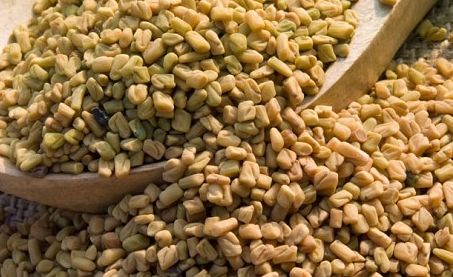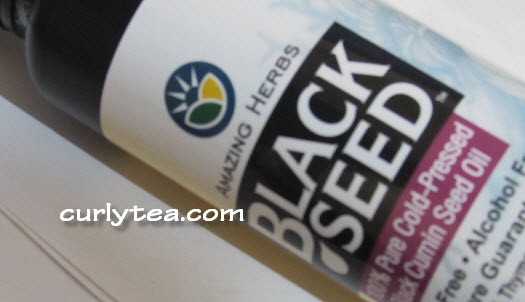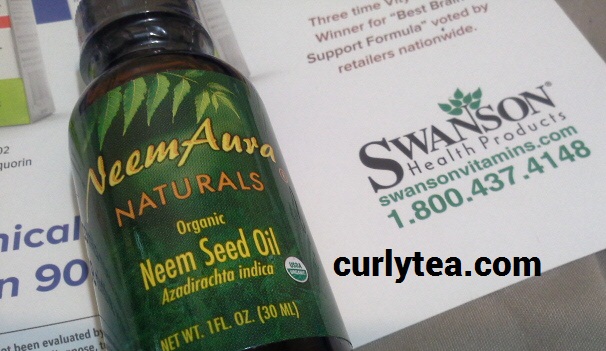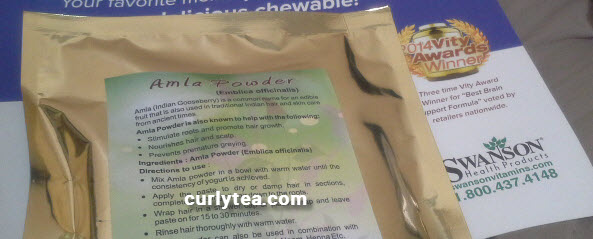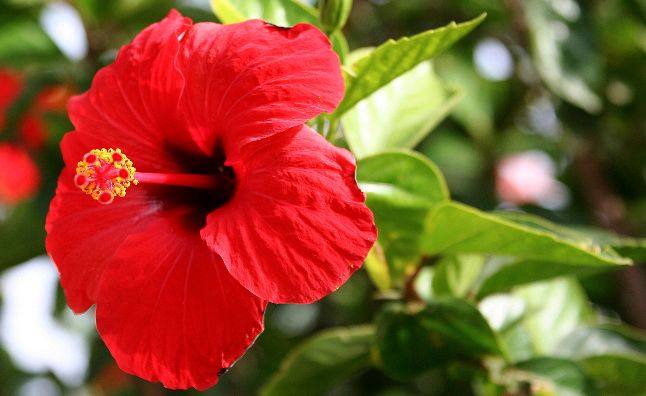

I’ve been testing my new anhydrous (without water) butter whip for a few days and I like it! Thanks to the Cupuacu butter and Behenyl alcohol, its creaminess almost resembles a water-based emulsion.
It not only has Coconut oil (Tropical Traditions Organic! luv it!), but also Shea butter, Cupuacu butter, Cocoa butter and Camellia oil which has been infused with the herb called ‘Cleavers’ along with Rosehips.
In addition to those goodies it also has Caprylic Capric Triglyceride and Soybean oil. I’m always surprised by how people overlook the awesomeness of Caprylic Capric Triglyceride. It has a very silky after feel on the skin and absorbs immediately and helps to improve the feel of an emulsion. 🙂
Rounding off the ingredient list is Behenyl alcohol, one of the fatty alcohols with the benefits firming up the final mix and leaving a smooth and soft feeling on the skin (depending upon how much you use).
Here’s what I used (percentages):
20% Coconut oil (Tropical Traditions Organic)
19% Shea butter (Unrefined)
19% Soybean oil
10% Cupuacu butter (Organic)
9.7% Cocoa butter (Organic, Unrefined)
9.7% Cleavers infused Camellia oil
6.8% Caprylic Capric Triglyceride
5.8% Behenyl alcohol
4ml Chocolate Chip fragrance
1ml Hot cocoa fragrance

Lets break down some of the ingredients a bit more.
Cleavers and Rosehips infused Camellia oil
I made an oil infusion of Cleavers and Rosehips myself using the dried herbs in Camellia oil. Camellia oil is highly prized for its skin loving properties. Its been used for years and years by Japanese people to add sheen and shine to the hair and help brighten and improve the quality of the skin.
“Camellia Seed Oil has excellent hair conditioning, and skin moisturizing, properties, along with advanced restructuring activity,” according to Ingredientstodiefor.com (5)
It absorbs quickly into the skin and is light enough for me to use directly on my face.
The dried herb known as Rosehips are called the ‘fruit of the rose’. Its super high in Vitamin C, but also contains Vitamins A, D, and E, and lycopene. It is said to have great antioxidant properties as well. (10)
The herb known as ‘Cleavers’ was used for generations by Native Americans as a tonic and to make hair grow. (7)
Cleavers is said to have anti inflammatory and astringent properties. It also was used to treat eczema and psoriasis and as a wash to remove freckles over time.
And heads up: There are at least 3 kinds of Camellia oil. Camellia Japonica ain’t cheap yall although its thought to be the best one. You’ll pay at least $19 for about 4 ounces for that quality Camellia oil. The cheaper but still great versions are Camellia Sinensis and Camellia Oleifera (which is the type I used).
Behenyl Alcohol

Behenyl alcohol (also called Docosanol), along with the other butters, will help lock in moisture. Its known as a fatty alcohol for thickening emulsions, but its also a co-emulsifier. As mentioned before, it leaves a smooth after-feel; at least with the amount I used in this formula.
If that weren’t enough, it is said to have antiviral properties and is used in the treatment of cold sores (under the name 1-docosanol). Its actually part of the medication called ‘Abreva’.
Coconut oil
The new brand I’m super impressed with is Tropical Traditions Coconut Oil. Unlike all the other coconut oils I’ve used, this is isn’t nearly as greasy as coconut oil can sometimes be. It soaks up better than the other brands I’ve tried and leaves a gorgeous feel on my skin. So I added this as the largest percentage of my mix.
Coconut oil is great for both hair and skin, and its been used for thousands of years. It promotes a healthy scalp and its penetrating to help hair get stronger and make skin feel more moisturized.
Shea butter
I cannot say enough about Shea butter. Its gorgeous and nourishing on both my skin and hair, although I never use it enough. 😛 I can oil my scalp with shea butter and it’ll be soft and moisturized for almost an entire week. I’m not kidding.
Real Shea butter, unlike yellow Kpangnan butter (which is good too but is not shea), grows in very dry conditions. Unrefined shea butter will help to protect the skin, helps get rid of stretch marks and some discolorations on the skin over time. Some people even use unrefined shea butter as a deep conditioning treatment after shampooing.
Cocoa butter (Cacao butter)
Cocoa butter is a staple emollient in DIY care already. Many people already use cocoa butter to help improve skin elasticity and help to diminish the appearance of stretch mark.
I use raw, organic cocoa butter in this mix partly because of its gorgeous chocolate smell. It is a barrier butter in that it helps protect the skin and hair, and locks in moisture. Cocoa butter is said to be high in Vitamin A, calcium, magnesium, zinc, and manganese.
Raw cocoa butter is also full of antioxidants, Omega 6 fatty acids, oligomeric, procynanidins and phenethylamine, according to reports.
Oh yeah, did I mention it smells gorgeous?!
Cupuacu butter
Cupuacu (pronounced koo’-pah-soo) butter is one of those highly prized butters taken from the Rain forest used to help sooth and improve damaged skin. Its said to be high in polyphenols and helps to protect the skin while improving elasticity.
Its also thick enough to help improve the stability of your emulsions (oils+water+emulsifier+cupuacu).
In hair, Cupuacu is known as a ‘barrier butter’ where it helps to lock in moisture after you wash or spritz with water.
Ingredientstodiefor.com says its an “alternative to lanolin, offering the capacity to attract 240% more water allowing it to function much more effectively as a skin hydrator and plumper.”(4)
Soybean Oil
I only recognized the benefits of soybean oil this year after doing more research about it. I assumed that because it was cheap and readily available, that that was the only reason manufacturers put it in so much stuff. That may be the reason for any individual company, but soybean oil itself is pretty damn good.
Soybean oil is thought to improve the quality of the skin and to help moisturize. Its organic version is also thought to help even out the skin tone over time.
According to the Office of Dietary Supplements at the National Institutes of Health, “Most vitamin E in American diets is in the form of gamma-tocopherol from soybean, canola, corn, and other vegetable oils and food products.”(3)
And honestly, you won’t go broke by using it as an emollient in your DIY lotions, creams and butter whips.
My conclusion so far is that this stuff is a great light but effective sealer for my hair. Its good on my skin too (although I plain shea and plain Tropical Traditions coconut oil seems to be just a bit more outstanding).
The whip is loaded with skin barrier protecting ingredients like Cocoa butter and the water-attracting Cupuacu butter, so I’m going to use every last bit of it.
What’s your fav DIY butter mix and what were your results?
Related:
1 http://www.truthinaging.com/ingredients/behenyl-alcohol
2 http://www.dailyglow.com/three-benefits-of-soybean-oil-for-your-skin.html
3 http://ods.od.nih.gov/factsheets/VitaminE-HealthProfessional/
4 http://www.ingredientstodiefor.com/item/Cupuacu_Butter/804
5 http://www.ingredientstodiefor.com/item/Camellia_Oil/1241
6 http://www.camdengrey.com/essential-oils/camellia_seed_oil.html
7 http://www.mountainroseherbs.com/learn/cleavers.php
8 https://www.curlytea.com/item/cleavers.html
9 https://www.curlytea.com/item/rosehips.html
10 http://www.mountainroseherbs.com/learn/rosehips.php
 CURLYTEA
CURLYTEA
